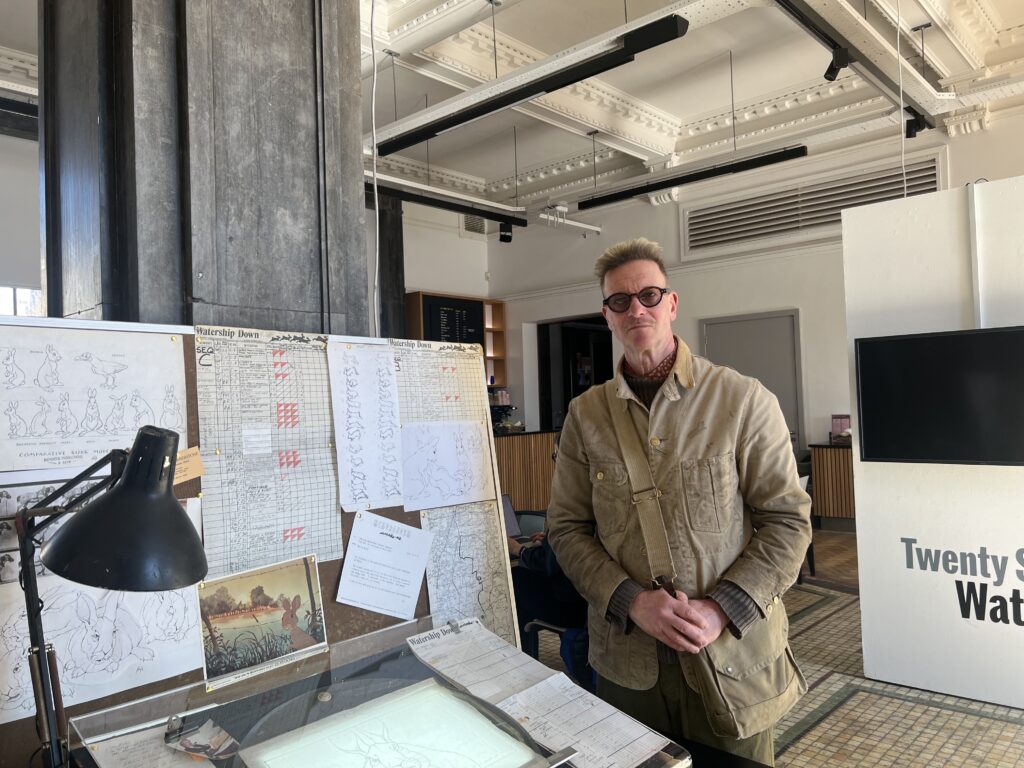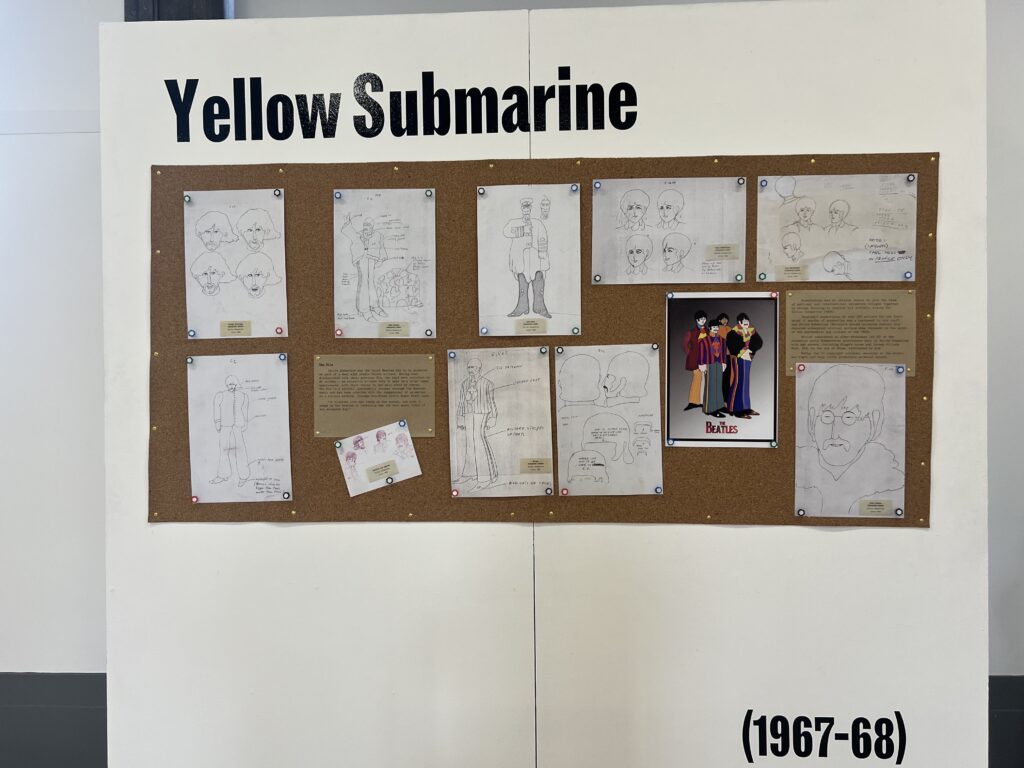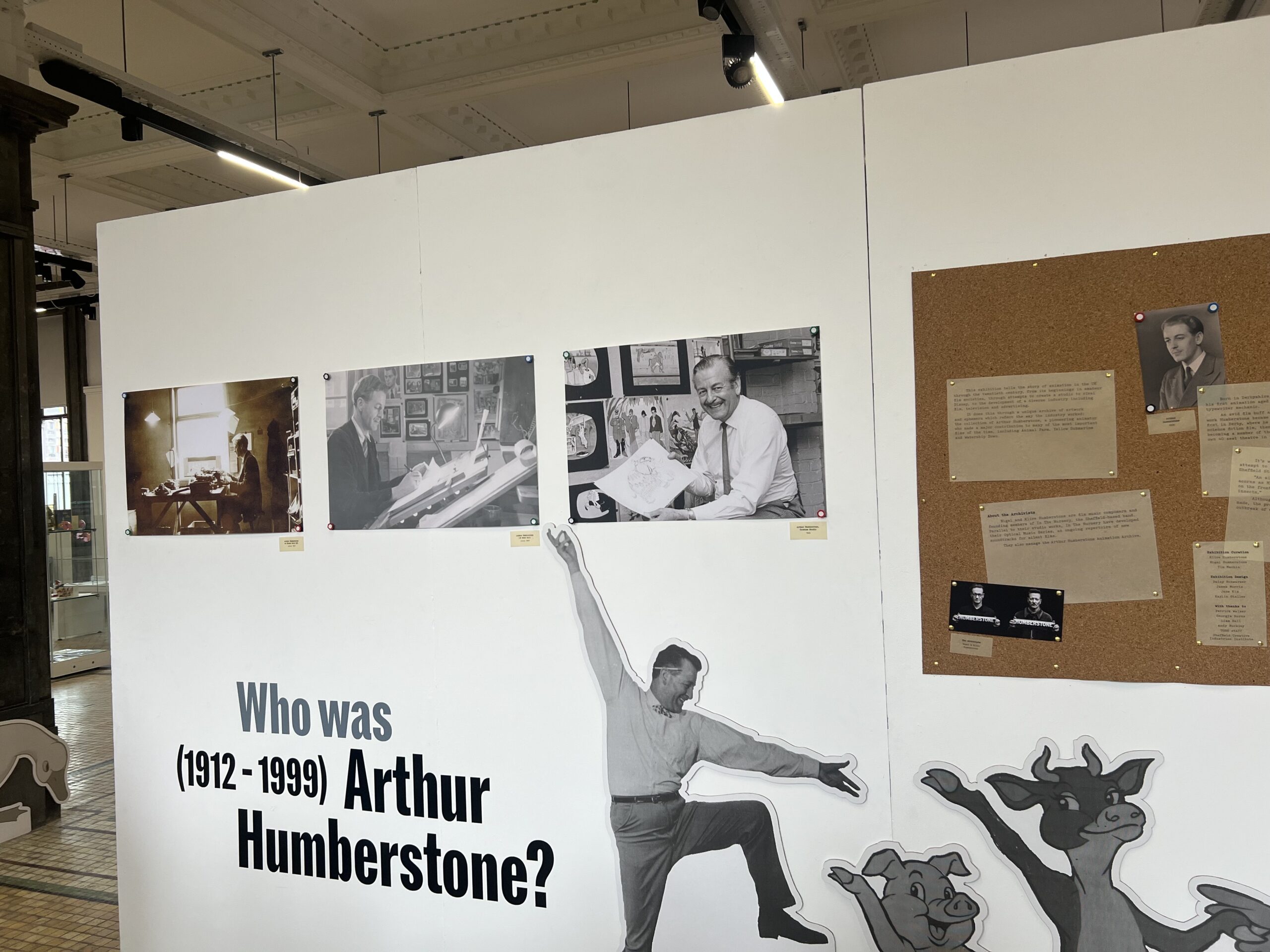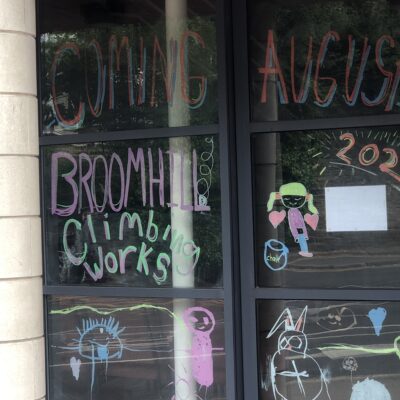A commemorative exhibition has been put on show at Sheffield Hallam University’s Post Hall gallery celebrating Arthur Humberstone, whose animation work has featured in films such as Animal Farm, Noddy Goes to Toyland and the BFG.
The materials for the exhibition were provided by his children, Nigel and Klive Humberstone who have an archive of their father’s work and wanted to show it off instead of just keeping it stored away.
The exhibition is free and open to the public until 5 April.
Arthur Humberstone was born in Derbyshire in 1912 and passed away in 1999 at the age of 87 with a successful career behind him working across feature films and TV adverts.
The work featured in the exhibition stretches from his early work whilst he was in Moor Hall in the 40s to animating The BFG in the late 80s.

Klive explained the reasoning behind why he and his brother wanted to have an exhibition of their father’s work.
He said: “We’ve just put together the things that will relate to the story and what he did.”
“He was proud of what he was doing and he was proud to share it with people.”
“A lot of it is paper and it can be easily lost so the main thing was to archive it and digitise it… we’ve done as much as we can.”
One of the most interesting parts of the exhibition was the drawings of Boxer, the horse from Animal Farm, which Klive was appealed to as they were drawings that Arthur sent to their mum whilst they were dating.
Klive also described his dad as a “avid filmmaker” due to his love of creating films which could especially be seen during his time helping to create “Watership Down” in 1978.

Mr Humberstone also helped animate the third Beatles film ‘Yellow Submarine’ ,1968, even though the band were reluctant to do another film due to being disappointed with their previous films.
At the time of production, whilst Humberstone was considered an elder statesman, at 55, of the animation world he still managed to have an impactful contribution on the film.
His contribution was most prominent in key scenes, including Ringo’s house and in the Sea of Holes.

It wasn’t an easy process however, a lot of paper was used up to create the films, there would be nearly 24 drawings needed just to produce a second of animation, or 20,000 drawings needed for a 10 minute film.
When asked about whether the exhibition would be displayed around different parts of the country, Klive said: “If there’s interest, it’s just nice to get it all out and realise it’s worth to people and showing the decades he worked in animation.”




